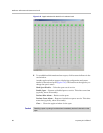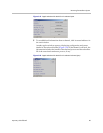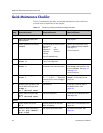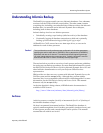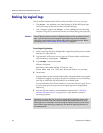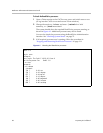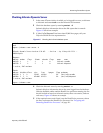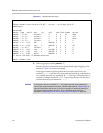
Maintaining the ReadiVoice System
Proprietary & Confidential 93
Understanding Informix Backup
The ReadiVoice system actually uses two Informix databases. One,
cdrcnow
,
consists of all the CDR (call detail record) tables. The other,
cnow
, contains
everything else, including your subscriber data. When we refer to the Informix
database here, we mean the entire Informix Dynamic Server dbspace,
including both of these databases.
Informix backup involves two distinct processes:
• Periodically creating a tape backup (called an archive) of the database.
• Continually logging all database transactions to disk and, optionally,
backing up these transaction logs (called logical logs) to tape.
All ReadiVoice CACS servers have two 4mm tape drives, so one can be
dedicated to each of these processes.
The sections below provide an overview of each process and some guidelines
for setting up your backup procedures. For more detailed information, consult
the IBM Informix Backup and Restore Guide for Informix Dynamic Server 9.3 and
other Informix documentation or call your Polycom Global Services
representative.
IBM provides two data recovery systems with Informix Dynamic Server, the
ON-Bar system and the
ontape
utility. Although they perform similar
functions, they’re not compatible with each other or interchangeable. For more
information, see the IBM Informix Backup and Restore Guide. This manual
discusses only the
ontape
utility.
At the time that this is being written, all IBM Informix documentation is
available in PDF form at:
http://www-3.ibm.com/software/data/informix/pubs/library/
Archives
Archiving creates a complete (level 0) or incremental (level 1 or 2) backup of
the Informix database on tape.
We don’t recommend incremental archives. The ReadiVoice database is
typically small enough that a level 0 archive goes quickly (under an hour), and
it offers greater security and a much simpler restore process. This manual
assumes that all archives are level 0.
Caution!
The /usr/informix/onconfig.conferencenow configuration file includes parameters
specifying the archive tape device (TAPEDEV) and log tape device (LTAPEDEV).
By default, both are set to /dev/null. To enable archives and logical log backups,
you must change these to the correct tape drive. Typically, /dev/rmt/0 is used for
archives and /dev/rmt/1 is used to continually back up logical logs.






